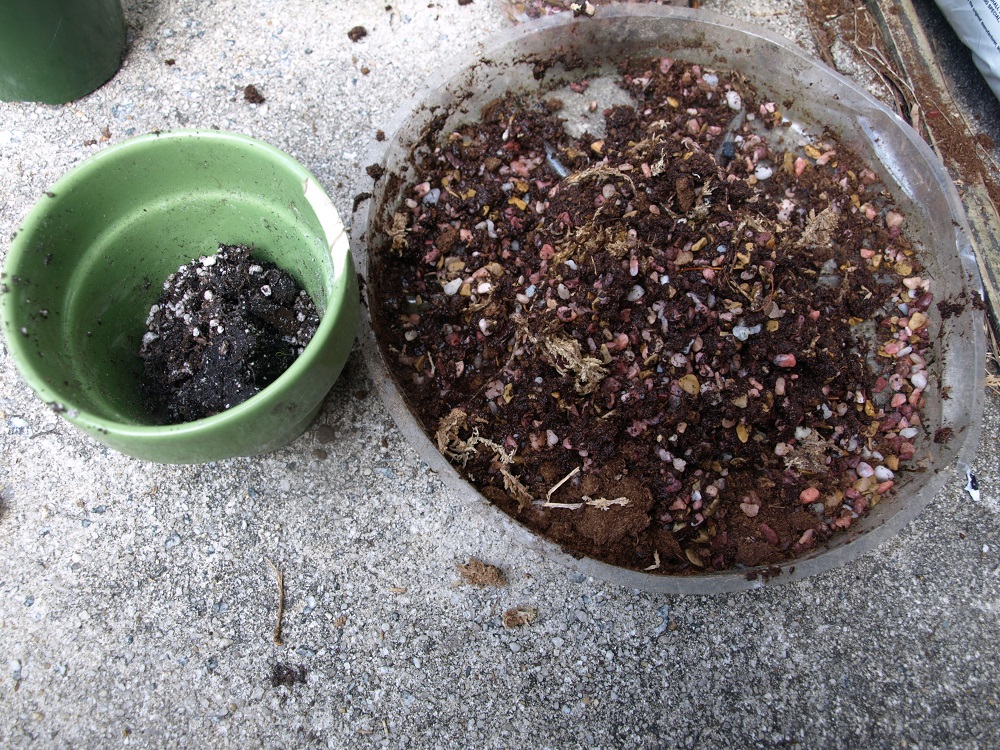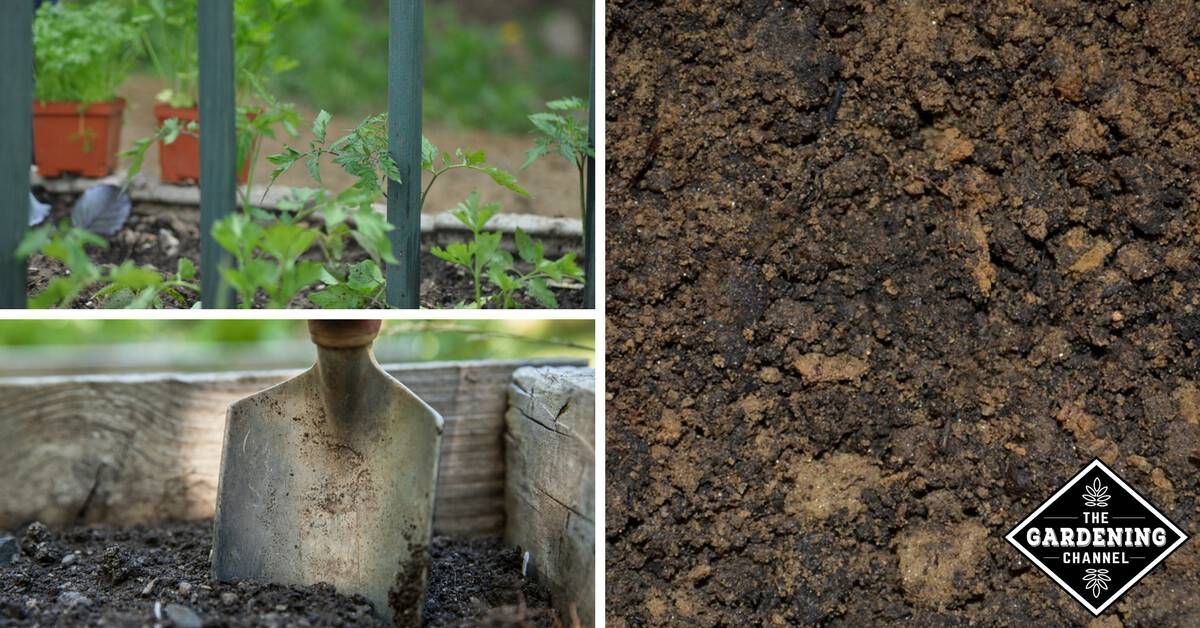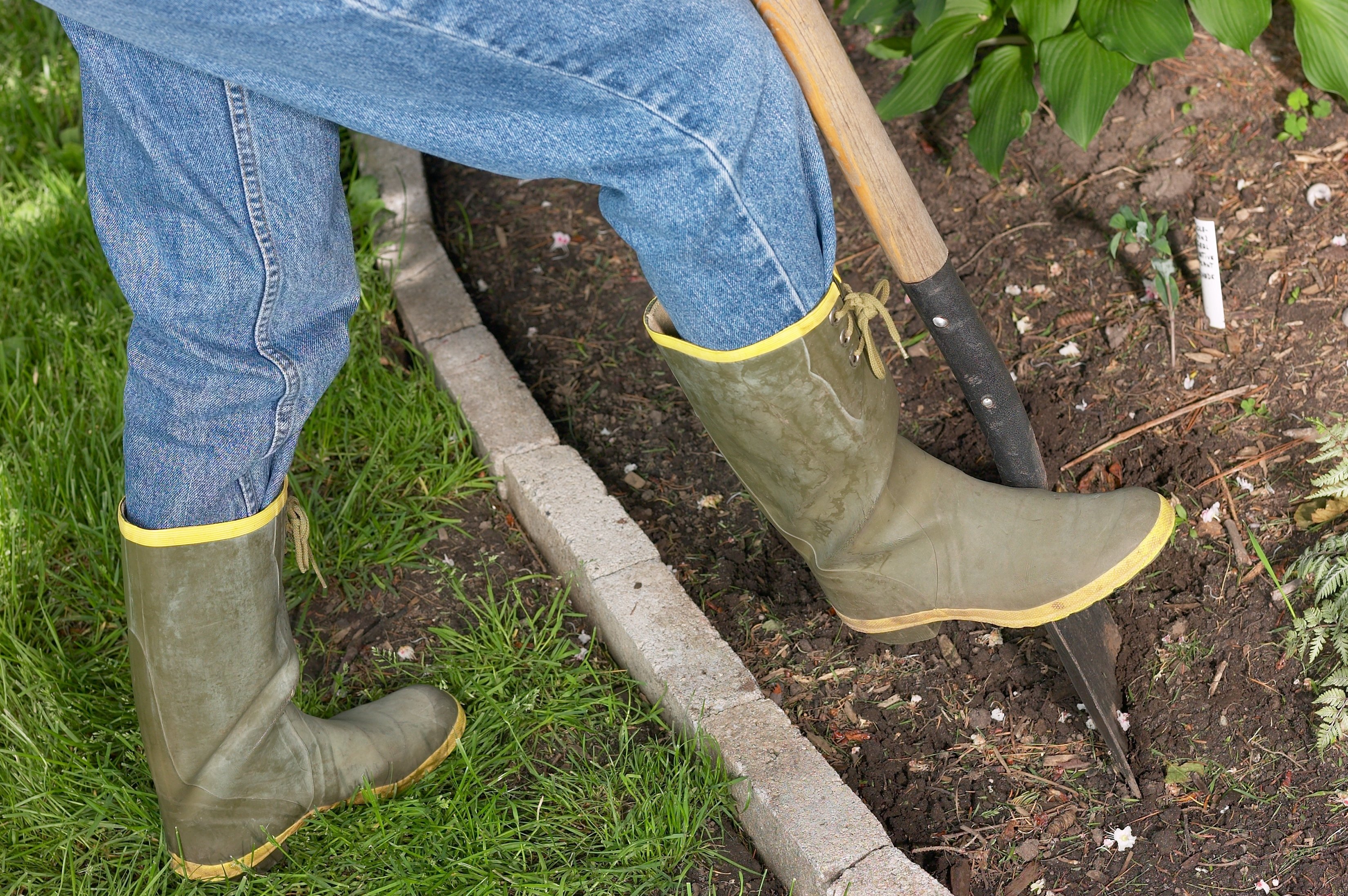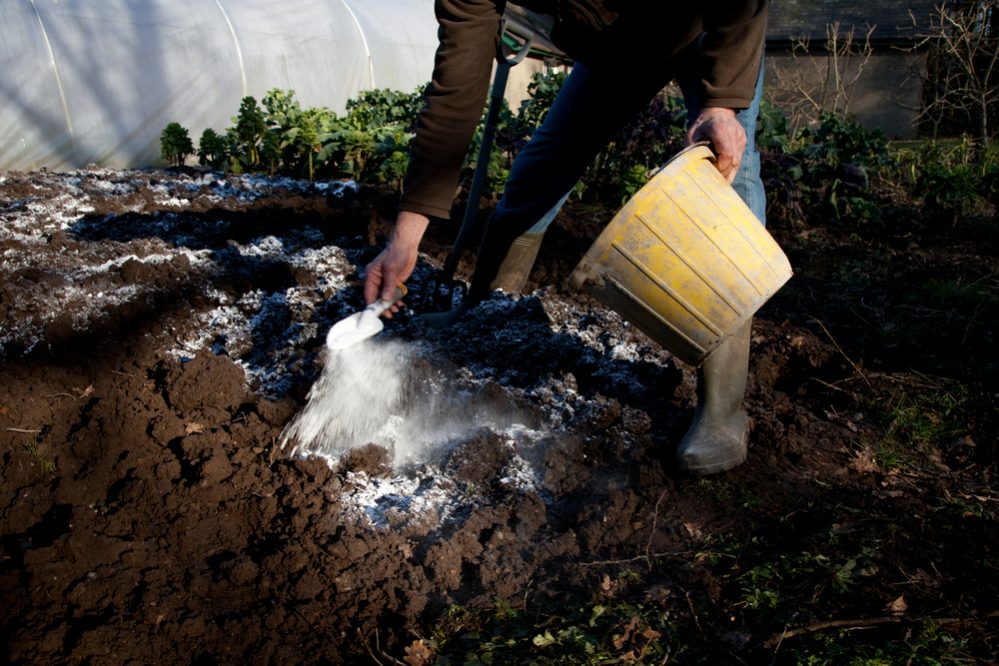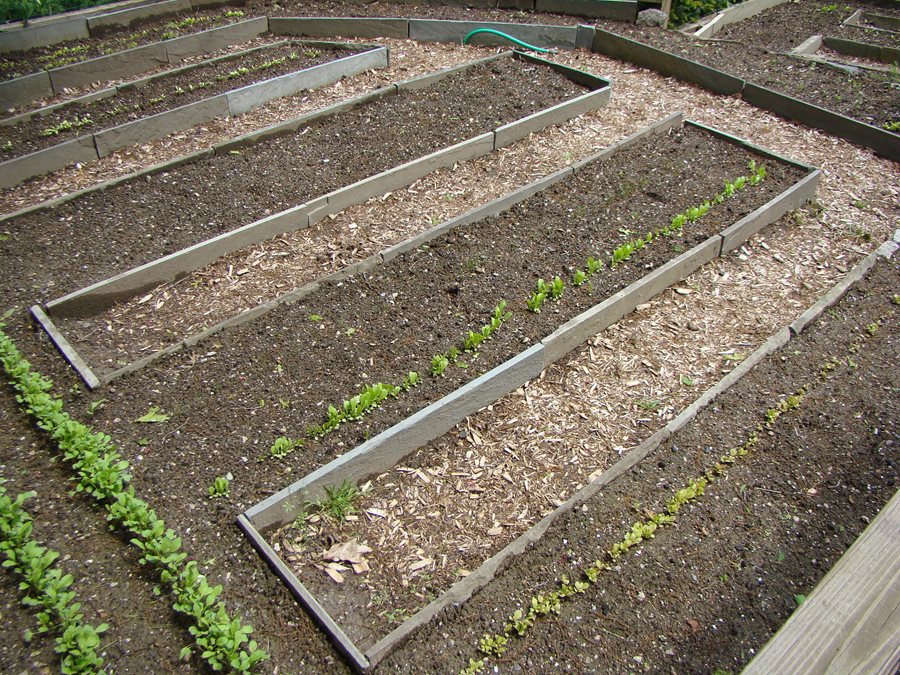Compost is decomposed organic matter, and it is the best thing you use to improve the health of garden soil. Adding organic matter is the best way to make your soil more loam-like and improve its structure. Another option is to build a raised garden bed and fill it with a well-balanced soil mix. Or take the simple approach by growing plants that do well in your soil type, such as choosing drought-tolerant plants for sandy soils.
You can grow a garden successfully in any soil, as long as the plant's roots are accustomed to the conditions. Organic soil is rich in humus, the end result of decaying materials such as leaves, grass clippings and compost. Good organic garden soil is loose and fluffy — filled with air that plant roots need — and it has plenty of minerals essential for vigorous plant growth. It is alive with living organisms — from earthworms to fungi and bacteria — that help maintain the quality of the soil. Proper pH is also an essential characteristic of healthy soil.
Clay soil is often not aerated enough and is deficient in good structure which makes it more difficult for successful growing. To get the most out of clay soil it's best to add large quantities of well-rotted organic matter in the fall and peat a few weeks before planting. Greensand can also be used to loosen heavy clay soils or bind sandy soils. Chop over-wintered cover crops directly into spring soils a few weeks before planting. During the growing season, sow a quick-growing cover crop, such as buckwheat, to fill the gap between spring and fall crops.
Why Is My Garden Soil So Hard When it's time to plant, pull the buckwheat cover and use it as a mulch for fall garden beds. Loamy soil, a relatively even mix of sand, silt and clay, feels fine-textured and slightly damp. It has ideal characteristics for gardening, lawns and shrubs. Loamy soils require replenishing with organic matter regularly, and tend to be acidic.
To get the organic matter down to root level, use a garden fork to mix the material into the top 4 to 6 inches of soil. In vegetable gardens, which usually contain annual or biennial plants, you can amend your soil each season. Perennial gardens should be amended prior to planting so you won't disturb the plant roots.
Many perennials must be dug up every few years for division, providing a good opportunity to work in additional organic matter. Soil texture depends on the amounts of sand, silt and clay it holds. A handy description of the three main soil components and an easy test to determine your soil type can be found atNASA's Soil Science Education Page. Sand constitutes the biggest pieces of soil particles and feels gritty to the touch. Next in size are the silt particles which are slippery when wet and powdery when dry. They are flat and tend to stack together like plates or sheets of paper.
If the soil feels smooth like talcum powder, it is silty. If the soil feels harsh when dry and slippery and sticky when wet, the soil is heavy clay. Rock phosphate, or rock dust, is also a valued amendment to restore phosphorus levels needed for vigorous plant growth.
If root systems are healthy, this likely means the soil is nice and loose, allowing roots to reach out for nutrients easily. Another sign of healthy roots are white coloring with fine strands – almost hairy looking roots. If this is the case, a drainage issue may be the problem. Over time this can be fixed by adding more organic material to the top of your soil like compost, shredded leaves, grass clippings, trimmings from your plants, etc. For a quicker fix, you could try mixing in some peat moss to your soil. This allows water and nutrients to drain away freely, making sandy soils less fertile than heavier soils.
Sandy soils tend to dry out in the summer but they warm up quickly in spring and they are much easier to dig than clay-based soils. Plants with shallow roots are prone to drying out as sandy soils lose moisture faster than heavier soils. Compost is a must--it will improve your soil immediately and introduce microorganisms that will continue improving your soil by further breaking down organic matter.
Add as much as you possibly can; it really is nearly impossible to overdo it with compost. Side-dress your plants with it throughout the growing season, and add more in fall when you are putting the garden to bed--you will see improvement in no time. Before planting every year, ensure sufficient nitrogen by counting all the sources you've added. Organic fertilizers, such as blood, seed, or feather meal, are sources of concentrated nitrogen. Fall or spring legume cover crops transfer nitrogen from the atmosphere to the soil. Manures or green grass clippings, incorporated as amendments, provide nitrogen as well.
Compost, on the other hand, does not supply enough garden nitrogen. While compost is great for improving overall soil health, additional nitrogen sources are needed when using compost as an amendment. Chop organic material directly into the top 2 inches of soil with a heavy bladed hoe and cover with mulch. Ideally, add concentrated manures, mineral phosphorous and potassium fertilizers, and lime at the same time. Adding these materials in the fall gives them time to break down for use when plants need them in the spring.
Adding organic matter in the form of compost and aged manure, or using mulch or growing cover crops , is the best way to prepare soil for planting. Adding chemical fertilizers will replenish only certain nutrients and do nothing for maintaining good, friable soil. Organic matter will help supply everything your plants need. Of the 17 or so elements thought to be essential for plant growth, nitrogen, phosphorus and potassium are the most important (see What's in a Number?). They are known as primary or macronutrients because plants take them from the soil in the largest amounts. Fertilizers that contain all three of these nutrients are labeled complete fertilizers, but they are hardly complete in an absolute sense.
Calcium, magnesium and sulfur, known as secondary nutrients, are also important to many plants. Lesser or micronutrients include boron, copper, iron manganese and zinc. Some plant micronutrients have specific functions such as cobalt, which isn't used by most plants but helps legumes fix nitrogen. Another critical component of your soil is its acid-alkaline balance or pH reading. All these essentials — and the proper texture — makes for healthy soil.
After a crop is harvested the soil needs to be renewed before planting a successive crop. These cover crops are tilled in before they go to seed, and break down quickly so a new harvestable crop can be planted without much delay. For starters, fall mulching gives you the upper hand on spring weeds. Pull weeds that do emerge in the spring early and quickly, when they are small and easy to manage.
Covering garden beds right from the start gives you the jump on garden weeds, while feeding the soil with organic material at the same time. Hungry plants crave nitrogen, which can often be in short supply, even when compost is used. Try organic fertilizers such as blood meal, grass clippings, or manure.
Or grab some nitrogen from the air by using legume cover crops in the fall or spring. You can increase the amount of organic matter in your soil by adding compost, aged animal manures, green manures , mulches or peat moss. Because most soil life and plant roots are located in the top 6 inches of soil, concentrate on this upper layer. To learn more about making your own compost, read All About Composting.
Alkaline soil on the other hand, needs to be made more acidic. This can be done with the addition of sulfur, sawdust, conifer needles, sawdust or oak leaves. Cover crops are a temporary planting, usually sown in the fall, that help protect the soil from wind and erosion and add valuable organic material. They also establish a dense root structure that can have a positive effect on soil texture. Cover crops also suppress weeds, deter insects and disease and help fix nitrogen. When the crops are turned into the soil, they become green manure .
Good soil provides just the right space between its particles to hold air that plants will use. Silty and heavy clay soils have small particles that are close together. Sandy soils have the opposite problem; their particles are too big and spaced out. The excessive amount of air in sandy soil leads to rapid decomposition of organic matter. To complete this test, find a time that the soil being tested is not too wet, but not too dry. Dig up a cupful or so of soil about six to ten inches down.
Break the soil apart and study the "crumbs" or material. Ideally, this soil will be crumbly with no large, hard clumps. Good sandy soil should hold its shape well, but crumble easily with slight manipulation. If it does not break apart easily, the soil may be too hard. Soil should have different sized crumbs in it – it should not look uniform! If your soil will be fallow for more than one growing season, you can plant perennial or biennial green manures, such as clover or alfalfa.
All cover crops should be tilled-in at least three weeks before the area is to be replanted, so the organic matter will already be partially decomposed at planting time. A healthy soil will also contain about 25 percent water. Water, like air, is held in the pore spaces between soil particles.
Large pore spaces allow rain and irrigation water to move down to the root zone and into the subsoil. In sandy soils, the spaces between the soil particles are so large that gravity causes water to drain down and out very quickly. Soil organisms can represent 3% of the dry matter in your soil. They include bacteria, fungi, mites, ants, millipedes, beetles, earthworm, slugs and snails.
Soil organisms derive their energy and nutrients from breaking down plant and animal material. When digesting this material they release oxygen and mineral nutrients that plants can use. Whey they die they decompose and release more nutrients, so are valuable contributors to soil fertility. They also help improve soil structure with their tunnelling and burrowing, and by converting fine particles into larger crumbs. Soil organisms need large supplies of organic matter to live on, warmth , moisture., oxygen and a near-neutral soil pH.
Organic dry fertilizers are mixed into the soil according to the directions on the label and then watered. They work more slowly than liquid fertilizers, but last longer. Fertilizer blends contain different amounts of nitrogen, phosphorus and potassium.
Other fertilizers may contain bat guano, rock phosphate, molasses or other ingredients. There are dozens of recipes for making your own organic fertilizer. Natural organisms—such as earthworms, invertebrates, and fungi—thrive in healthy soil.
These organisms are very useful in fertilizing soil, and they can also help aerate it. Earthworm castings also help provide soils with organic matter, nutrients, bacteria, and enzymes. To test for natural organisms' presence, make random visual checks on your garden soil. Peaty soil is a darker soil and feels damp and spongy due to its higher levels of peat.
It is an acidic soil which slows down decomposition and leads to the soil having fewer nutrients. The soil heats up quickly during spring and can retain a lot of water which usually requires drainage. Drainage channels may need to be dug for soils with high peat content.
Peat soil is great for growth when blended with rich organic matter, compost and lime to reduce the acidity. You can also use soil amendments such as glacial rock dust to raise pH in acidic soils. Use soil tests results and other resources to determine your garden's fertilizer needs. For general purposes, purchase a complete organic fertilizer mix from your garden center and use as recommended. Scratch fertilizers into the top 2 inches of vegetable gardens.
Spread fertilizers and lime, when needed, around the plants, water lightly, and cover with mulch. It can encourage the growth of weeds by bringing dormant seeds to the surface and exposing them to sunlight. It can disturb the beneficial burrowing activities of earthworms — the best free labor you can get for loosening and aerating your soil.
It can also interfere with the activity of important soil microorganisms. Despite these negatives, tilling is still a viable option if you need to work organic matter and nutrients into sticky clay soil or a new garden bed that's heavily compacted. After that initial deep tilling, you can often let nature take its course to improve the structure of your soil.
Thebest garden soils are between about 5% and 10% humus, or rotted organic material. Loam, however, is an ideal garden soil blend of just the right amounts of clay, sand, silt, and organic material. To improve sandy or clay soil and move it toward loam, incorporate lots of organic matter in the form of compost and mulch. Heavy clay soils are quite dense, do not drain well and tend to be hard and crack when dry. Because there isn't much space between the clay particles, there usually isn't much organic matter or microbial life in the soil.
